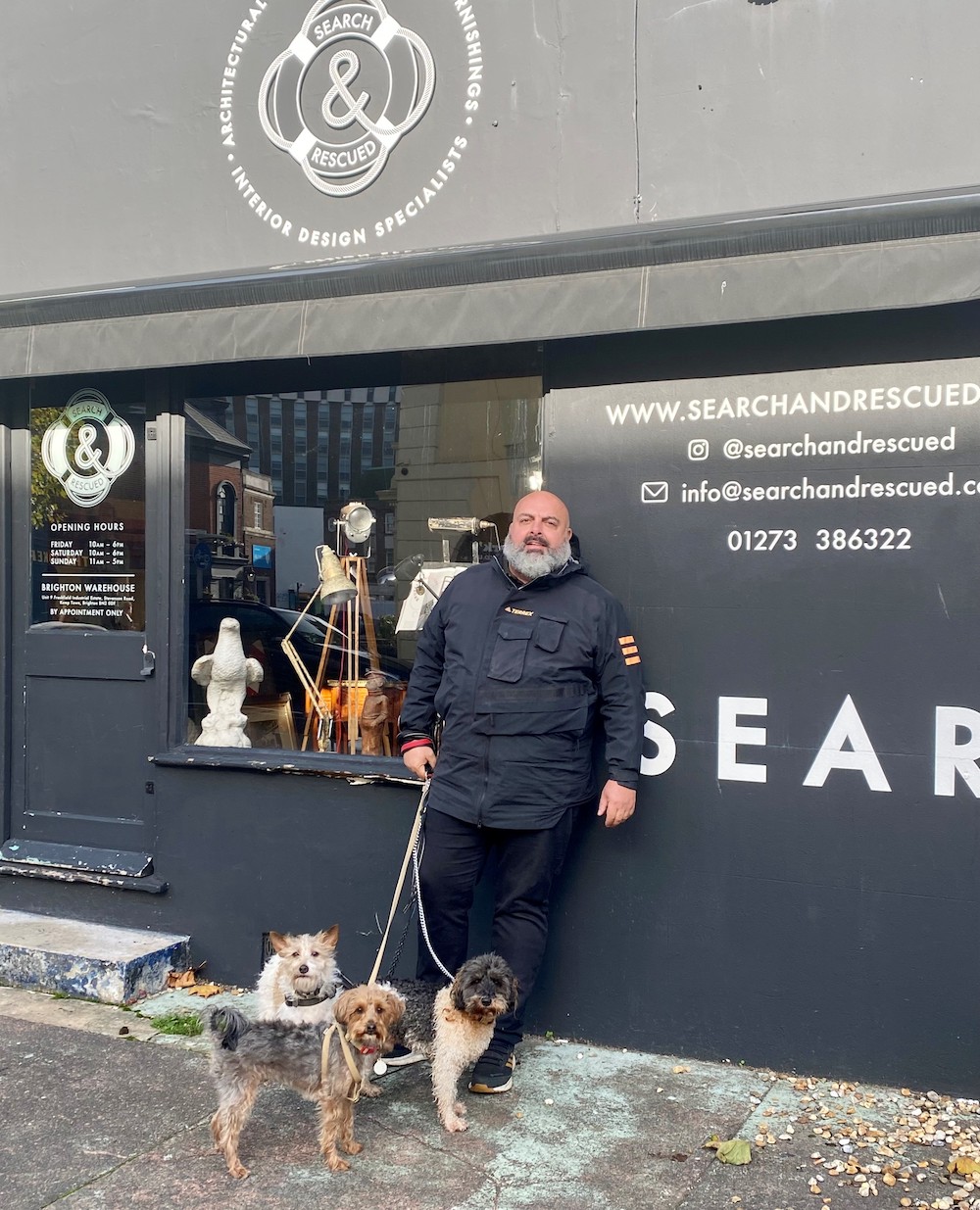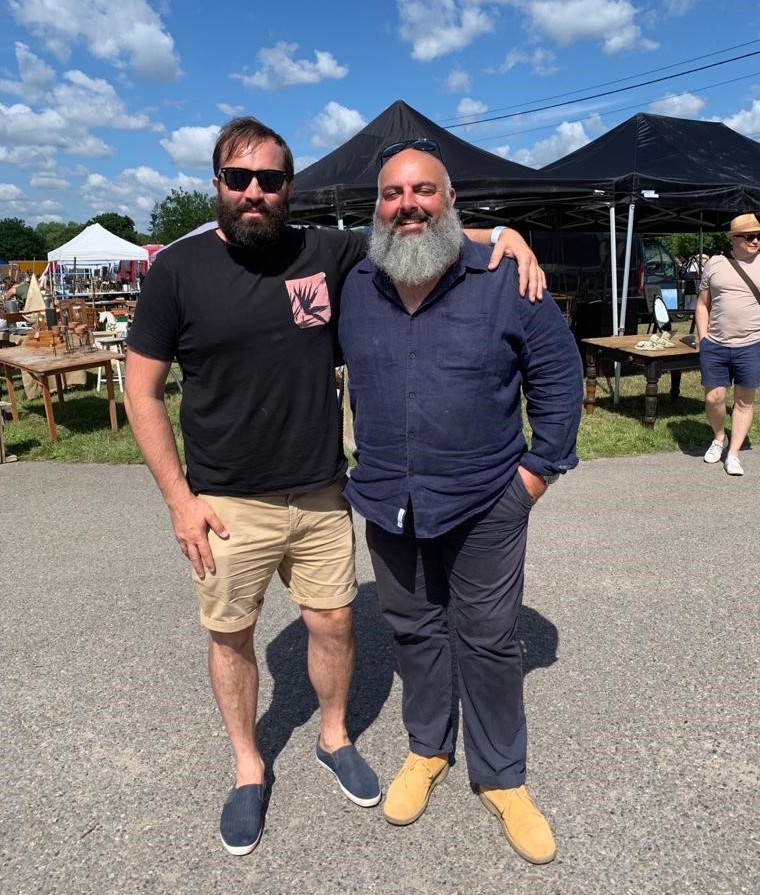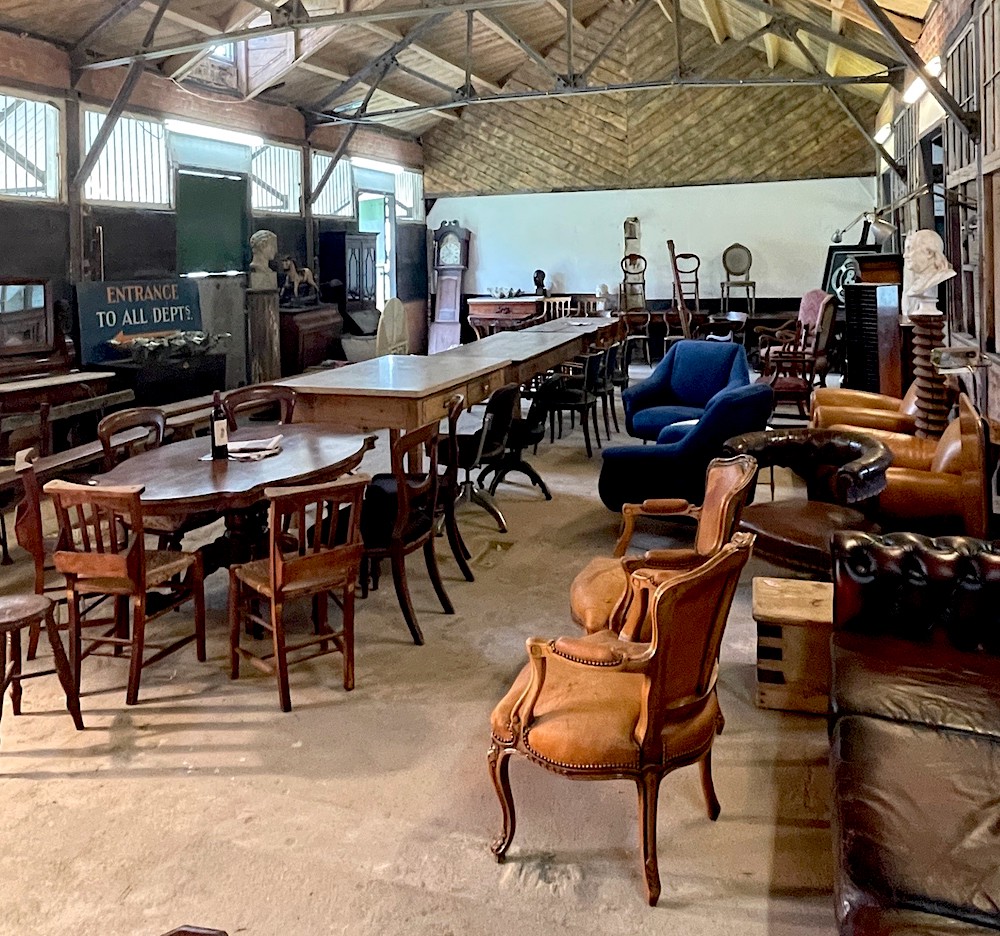Antiques Trade Talks – Search & Rescued
Search & Rescued are based in Brighton & Hove, and also in the picturesque, 6th-century village in nearby Lewes. The Brighton showroom is located opposite the Duke of York Cinema (the oldest working cinema in the UK). The Lewes stables warehouse and workshops are 15 minutes away, sat atop the beautiful South Downs National Park on the Old Lewes Racecourse. In business for over 15 years and specialising in interior design, architectural antiques and vintage furnishings, we caught up with Nat Ryder for a chat. Find out more at www.searchandrescued.com

What is the unique appeal of antiques?
Craftmanship and individuality. Antiques can also be restored, allowing future generations to benefit from their beauty. Early Georgian furniture has really picked up a pace over the last year, as has good quality English and French provincial furniture. Quality mid-century furniture has gone from strength to strength, and modern art continues to be a sound investment.
Which are the ones to watch/future sellers?
Modern Art, such as Gary Stranger, David Shrigley, Kaws, The Connor Brothers and the long-standing Banksy. In the furniture field, early Georgian furniture similar to that which adorns the Brighton Pavilion. Period bamboo and cane furniture is hot right now.

What antiques do you have at home/collect and why?
Various. My love of a good yarn led me into collecting first edition books. I own numerous Ian Fleming and Graham Greene first editions, which have, over time, become highly collectible and risen in value. I am also lucky enough to having been in the right place at the right time in my youth (Hackney) and own several YBA works (Young British Artists) including Tracey Emin and Angus Fairhurst. I also love Georgian furniture, the craftsmanship of this era of furniture just screams quality. My own home is ever changing with art and furniture. Spending time with fabulous works of art and furniture is a joy.
What do you think will be the antiques of the future?
Emerging artists in the modern art world such as Yves Scherer. The antiques now, are, and will be, the antiques of the future. Currently, there is no perpetual cycle of replenishment, as we live in a world of mass production of low quality furniture, which has a limited lifespan and poor green credentials.
How is the industry changing and are you optimistic for its future?
The antiques game has changed significantly over the last few years. Brexit and the global pandemic hit us all hard and we are thankful for coming out the other side. The fairs have been busy. It’s been great to see old friends and meet new contacts since getting back to some normality. Online sales have been strong and we as a business have adapted to the increased online demand. The restriction of goods in and out of the UK is causing issues for dealers and unfortunately shows no sign of improvement. The new regulations mooted for 2022 (full customs declarations and controls will be introduced on January 1, 2022) will undoubtably make life more challenging for us all. We however remain pragmatic and in true British spirit, we keep calm and carry on.

Is new technology good for the trade and buyers/collectors?
In short, yes. Buyers can now find antiques at the touch of a button. Our business has benefited greatly from the uplift in online shopping. The pandemic over the last two years has also changed people’s shopping habits and online sales have grown exponentially. Technology should be embraced as it allows both dealers and buyers to access products globally.
Tell us some trade secrets – what key questions should buyers ask?
Giving a great service and product is what it’s all about. Buyers always ask our advice on the history and provenance of items we sell, so always know your product and how to care for it for future generations. Buyers should ask whether an item will remain saleable in the future and hold its value.

What antiques/artworks would you buy if money were no object?
The Diana and Minerva Commode (1773) designed by Thomas Chippendale Senior. A Thomas Hope X-frame curule stool. David Hockney, The Bigger Splash; Matisse, The Snail.
You’re down to your last 50 quid – what antiques/art would you buy?
A Herbert Terry Anglepoise light. Beautiful British engineering, iconic design, practical and always saleable.
Where are your favourite antique hunting destinations and why?

New York Chelsea market, back in the day, was a fabulous market with such colourful and interesting characters, with great finds. Ardingly and Kempton antique fairs in the UK are fun and always have a good cross section of established dealers. Le Mans market in France which was run by the legend Dany (an incredible woman, who is sorely missed) is a good market and always turns up some gems. We constantly have our eyes glued to the auction houses throughout the UK and can still (just about!) pick up some rare finds.
What are some of the biggest mistakes that buyers make?
Thinking that everything is up for negotiation. Don’t haggle over small amounts of money. The times we see buyers come back to us after walking away/trying to negotiate, thinking an item will still be available, only to find it sold. Turning up late to any market/fair, the good items will have been snapped up. The old adage ‘the early bird catches the worm’ is never truer than in the antiques business.
What do you consider the high point of your career in antiques?
Being lucky enough to meet and sell to your heroes in life is an extraordinary experience (sorry, not mentioning any names!) The highest point, however, was being able to spend time with my father, who taught me everything I know. Being his general assistant as a child gave me the knowledge and life skills to build the business.

Are antiques attracting younger buyers and, if not, how can the industry reach out to them?
The antiques business is attracting a wide demographic of buyers and it never ceases to amaze us as to the differing ages of our customers from the Gen X, Millennials to Gen Z. Social media has opened up the business. For example, this article, upon publication, will be shared with over 10,000 Instagram users who follow @searchandrescued. A large percentage of these are of the Gen Z age who are mindful of the planet and the benefits of buying sustainable furniture such as antiques and vintage homewares.
What advice would you give to people new to antiques who want to learn more?
Immerse yourself in the markets/fairs. Speak to the dealers and traders. Don’t be afraid to ask questions. It’s a great business to be in and the more you give the more you get. Choose an area that really interests you and learn everything about your specialist subject. Use that as a springboard into the trade. You will never look back!
Get up early, most markets start at 5:30am!


